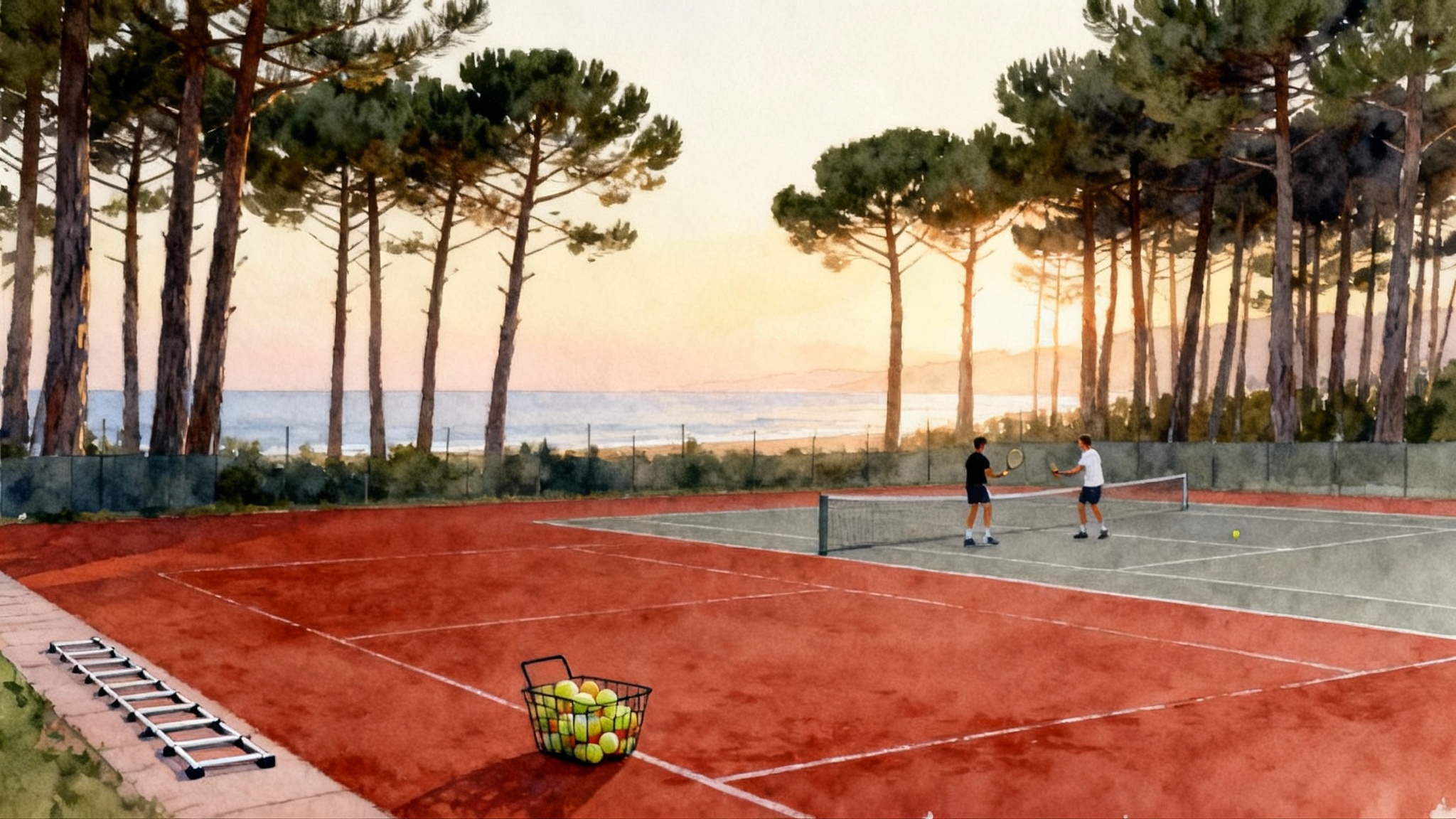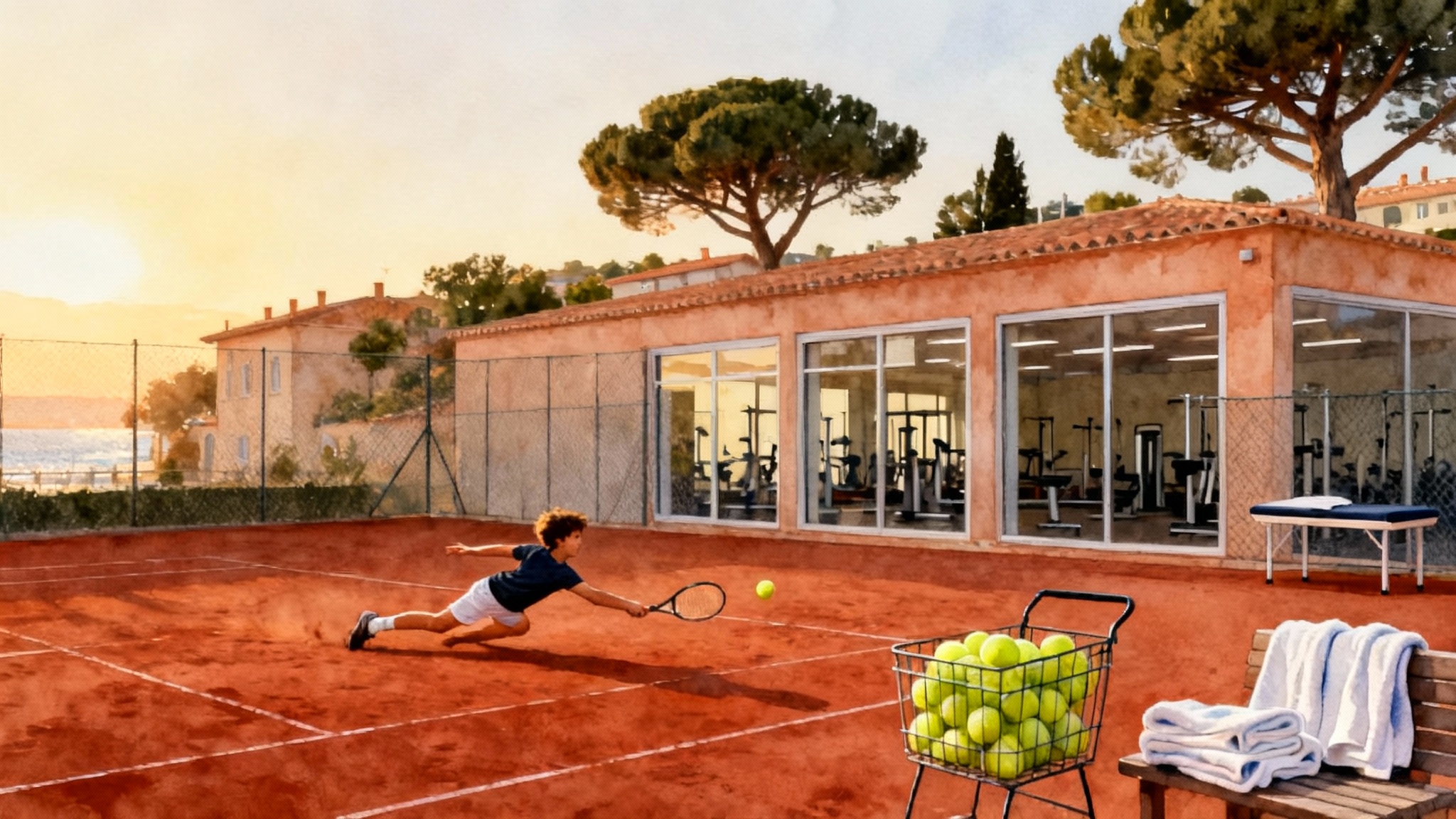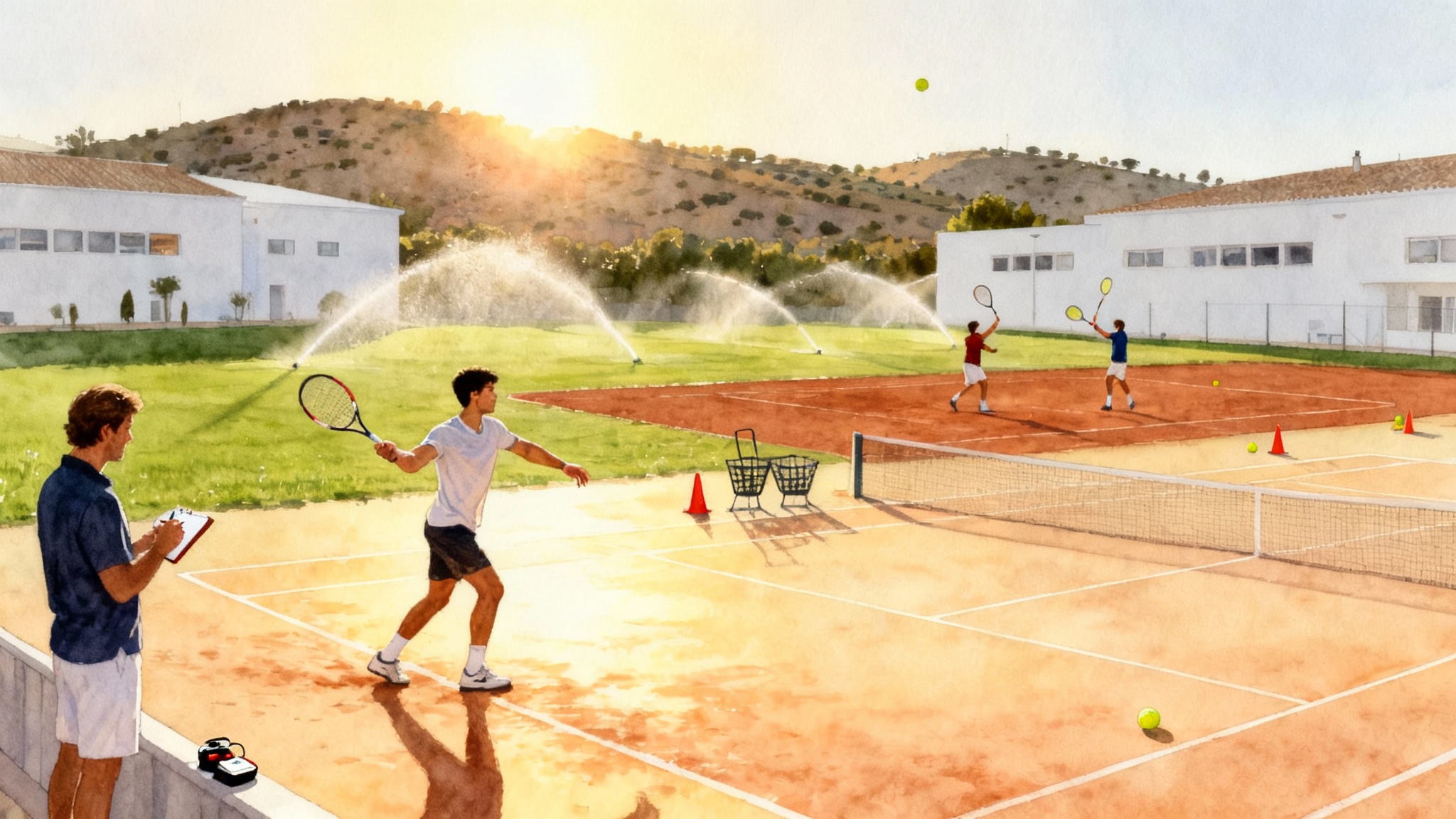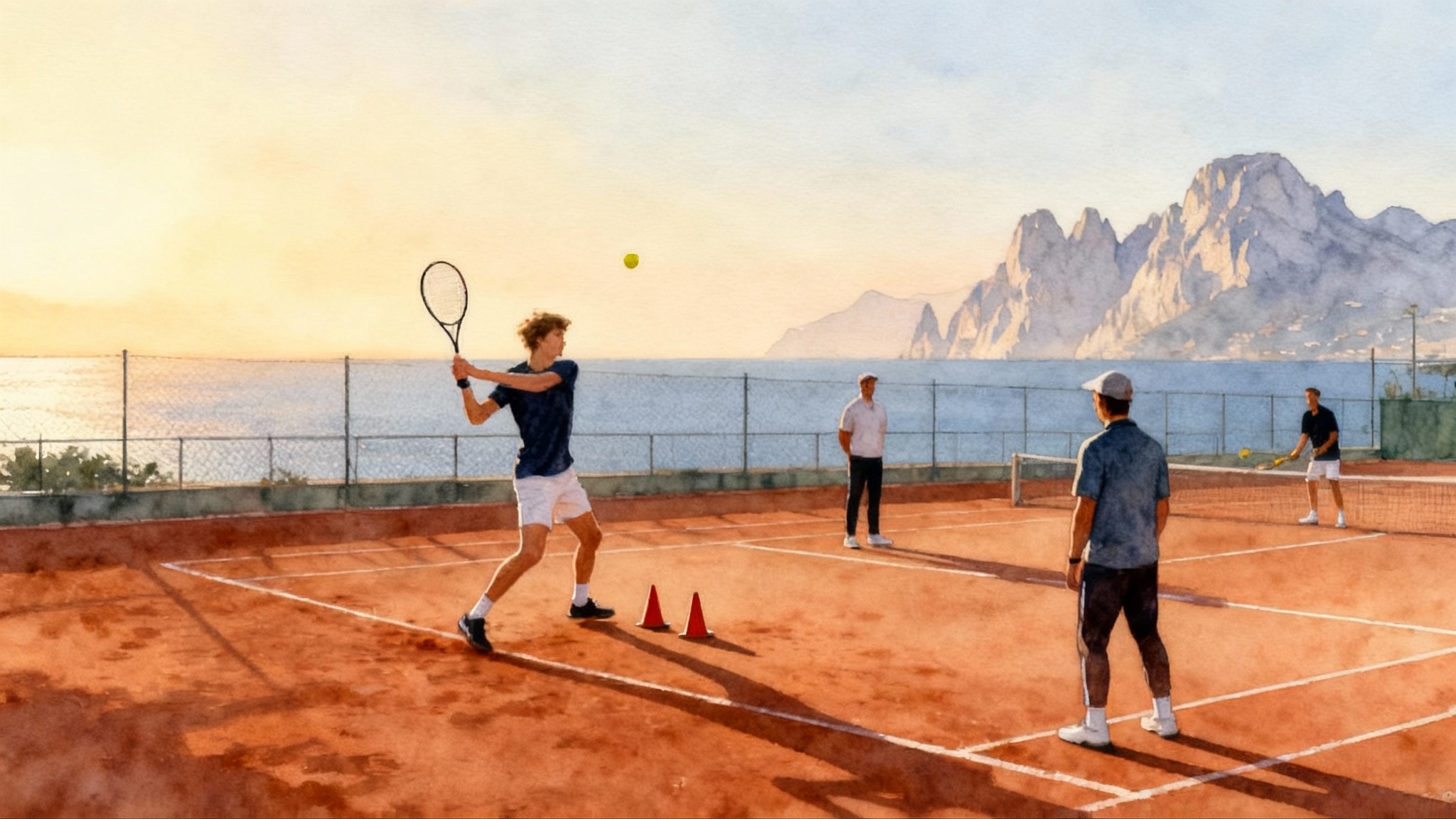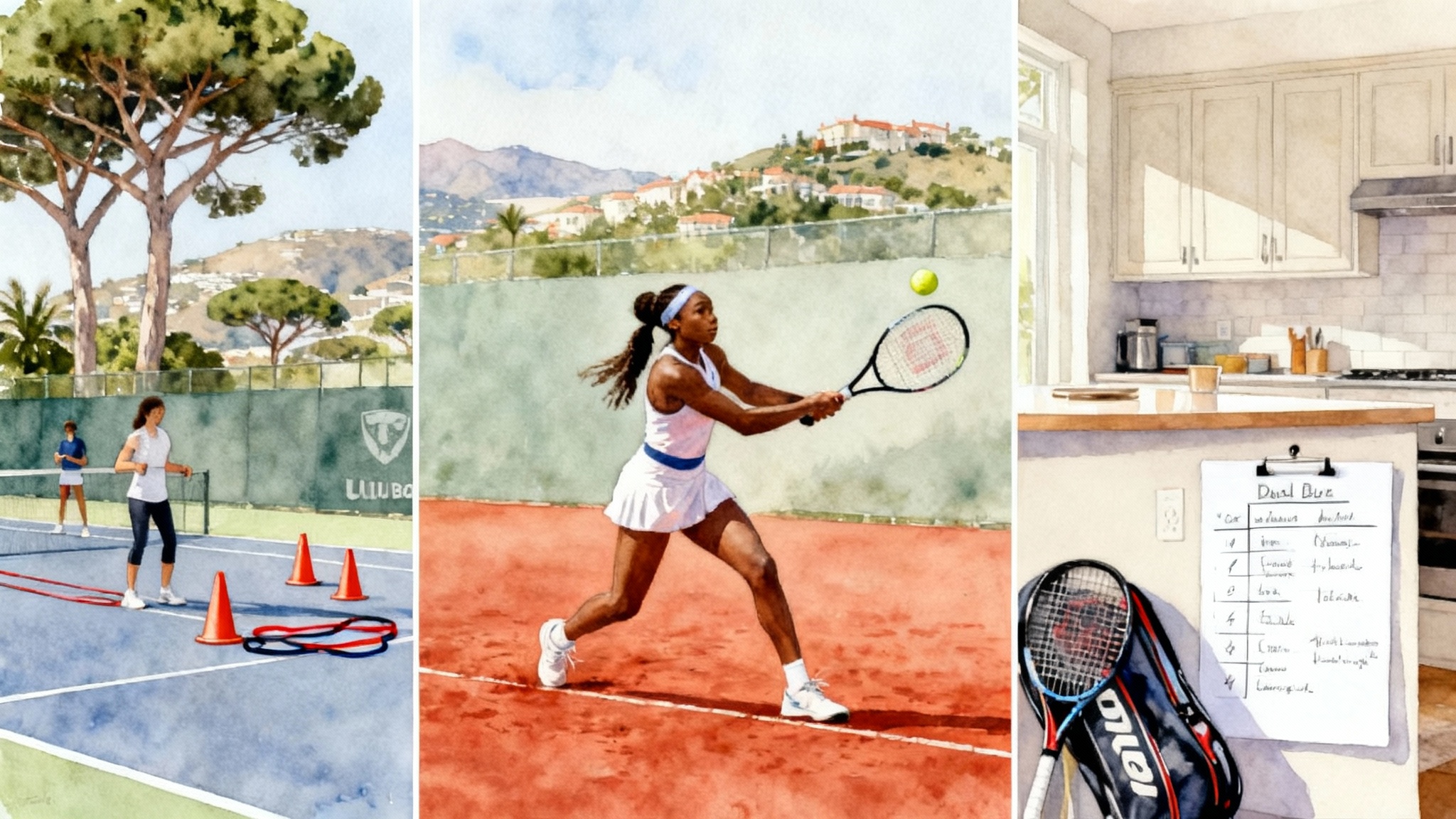From College Park to Arthur Ashe: How JTCC Forged Tiafoe
Frances Tiafoe’s rise was not an accident. It was a decade of daily habits at the Junior Tennis Champions Center, a smart handoff to federation support, and timely pro decisions. Here is the playbook parents can use.
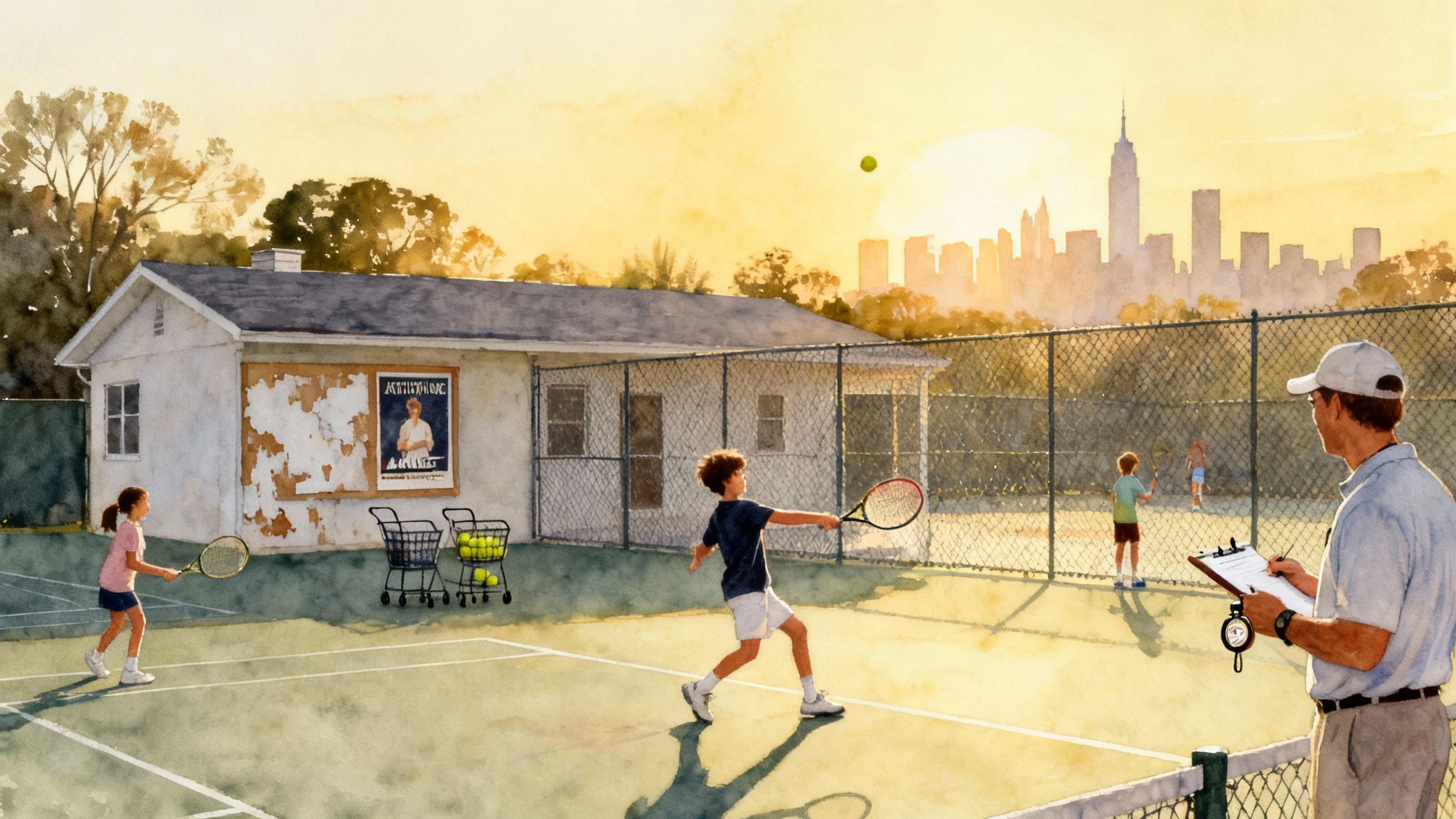
The night New York met a kid from College Park
On a packed night in Arthur Ashe Stadium, Frances Tiafoe did not just win points. He conducted the crowd. He waved them louder, sprinted between changeovers, and swung through break points with a grin that read as both joy and defiance. To the world, it looked like a star arriving. To the people who watched him grow up at the Junior Tennis Champions Center in College Park, Maryland, it looked familiar. The energy, the grit, the sense that tennis could be both serious work and fun at the same time. That was the College Park signature.
This is a verified, step-by-step look at how Tiafoe moved from a community-rooted academy to United States Tennis Association Player Development and on to the Association of Tennis Professionals elite. The details matter, because they show how a community academy can power a champion, when to lean on scholarships, and how to time the federation handoff without losing the home base that built the player in the first place.
College Park’s foundation: how the environment raised the player
The Junior Tennis Champions Center, known locally and nationally for developing high-level players, is not a factory line. It is a campus with a rhythm. Mornings start early. Fitness is not an add-on. Coaches know the kids, and older players are expected to help younger ones. That expectation builds confidence on both sides. It teaches leadership to the older group and gives the younger group a model they can see up close.
Frances Tiafoe’s story fits that environment. He and his twin brother spent long hours at the courts, often more hours than seemed possible for kids their age. The center offered access, structure, and a plan that could stretch over years. The plan looked simple on paper and demanding in practice:
- Weekly training blocks that paired consistent technical work with daily competition
- Skills testing every month to measure concrete progress in footwork, serve speeds, pattern execution, and match-play habits
- Access to indoor and outdoor courts to remove weather as an excuse
- School coordination so morning practices did not compromise academics
It was not glamorous. It was daily. The value was compounding. By age 13 to 14, Tiafoe already had a physical identity on court: a first step that separated him from peers, balance through open-stance defense, and the willingness to transition from defense to offense in one shot. The campus-first identity echoes how Equelite forged Carlos Alcaraz and how Piatti Academy forged Sinner built players through clarity and volume.
Long-term coaching: why one lead voice matters in the chaos of growth
Junior players change quickly. Growth spurts remake timing. Strength arrives in bursts. The temptation is to chase fixes and hop between coaching voices. College Park resisted this by building long-term relationships. Tiafoe had a lead coach through his formative years who knew his stroke history, his motor patterns, and his personality. That continuity was the anchor as his game evolved.
What does that look like day to day?
- Technical guardrails stayed constant. The forehand contact was trained to be slightly in front with a stable off arm. The backhand emphasized a calm head and shoulder turn. Serve work focused on a simple toss and clear targets. These anchors do not change when timing wobbles during a growth spurt.
- Pattern language was standardized. Every coach at the center used the same names for plays. For example, serve wide in the deuce court plus first ball to the open space was called the same thing in every group. That allowed Tiafoe to move between pods without mixed messages.
- Competition every week. Short scoring formats, two-on-one defense, and points that started with awkward feeds trained recovery and creativity. By the time Tiafoe reached big junior events, he had already solved messy points hundreds of times.
Parents often ask whether a prodigy needs a parade of specialists. The Tiafoe path shows that one lead coach with a clear plan, supported by a consistent staff that speaks the same language, can reduce noise and accelerate learning.
The first big markers: juniors that mattered for more than trophies
Results became milestones because they triggered the next decision points. Tiafoe’s progress through national events and premiere junior tournaments did more than fill a résumé. They opened doors to funding, wild cards, and higher-level practice opportunities. A major junior title at the Orange Bowl as a 15-year-old signaled two things at once. First, his level was world class for his age. Second, the environment that built him was not maxed out, but it was time to expand the circle.
That expansion did not mean leaving College Park behind. It meant adding targeted opportunities.
- More weeks training with older pros during school breaks
- Select International Tennis Federation events that matched his growth rather than chasing points
- A travel plan that prioritized surface education, not just short-term wins
The federation handoff: adding USTA support without losing your home base
United States Tennis Association Player Development can provide four assets that change a teenager’s ceiling: funding for travel, access to diverse sparring partners, specialist input in areas like strength and conditioning or nutrition, and a wider lens on scheduling. See how this blend has worked in another pathway with USTA Boca built Coco Gauff. The handoff works best when the player’s home academy stays in the loop and keeps ownership of the long-term plan. Families can also explore the USTA Player Development program to understand available resources.
Here is the practical way Tiafoe’s path shows that blend can work.
- Timing the handoff. The signs were clear. He could compete with older, stronger players. He was winning matches with patterns that translate to the professional game. He was physically ready to handle higher volumes. That is the point to layer in federation resources.
- Defining roles. The lead coach at the home academy stayed the central voice for technique and day-to-day habits. Federation coaches added block periods of fitness testing, tournament scheduling advice, and exposure to pro-level training weeks.
- Aligning calendars. The academy planned base training and local competition blocks. The federation filled in with camps and trips that offered variety and new opponents. The two calendars were shared in writing so nothing was duplicated or lost.
Parents can borrow this model. Treat your academy as the home team. Treat federation support as the travel team. Both are essential, but the home team protects identity while the travel team expands the world.
Translating academy work to the pros: what carried and what had to change
The first seasons on the professional tour reveal which junior habits will scale. For Tiafoe, several JTCC patterns carried immediately.
- First step and recovery. The ability to reset balance on defense and counterpunch translated on hard courts. It bought him one more ball, which in turn bought him crowd energy and pressure points.
- Serve plus one. Simple targets and the confidence to attack the first ball served as a launchpad even when nerves spiked.
- Joy as a competitive weapon. This is not soft psychology. Enjoyment on court lowers tension and keeps the swing free. The habit of making practice competitive and fun in College Park showed up in night matches in New York and Melbourne.
Some elements had to evolve.
- Return depth. Against top servers, chipping short or blocking without depth gave opponents easy first balls. The fix was a narrower stance on the first step and a clearer rule: lift through the middle third unless the ball begs a swing.
- Shot tolerance. On the tour, the median rally is longer than in junior finals. The training block became more about repeating heavy balls for four to six shots before changing direction.
- Fitness for five sets. Tournament weeks began to include practice sets that simulated fifth sets right after a tough session. That taught the body to compete while tired rather than to use fatigue as a reason to protect.
Key decision points that compounded
It is easy to tell this story as a smooth climb. It was not. The inflection points matter because they are repeatable for other families.
- Staying in school while training hard. Early on, the choice was to coordinate school rather than abandon it. That structure kept days predictable, which is a competitive advantage for a teenager. Predictability beats motivation over time.
- Choosing competition for learning, not ranking. When he entered events up the ladder, the purpose was targeted exposure. Losses were acceptable if they answered a question. Could he defend return games against a 130 mile per hour serve? Could he win from neutral without bailout forehands? Those tests saved time later.
- Building a small, trusted circle. The travel team stayed lean. One lead coach, one fitness plan, one family member. That avoided the too-many-voices problem and allowed honest debriefs after matches.
- Taking the first title and not changing the plan. When the first Association of Tennis Professionals title arrived, it would have been easy to assume the formula was complete. Instead, the team doubled down on fundamentals and kept the calendar simple. Wins are feedback, not a reason to reinvent.
- Embracing the spotlight intentionally. Night matches in New York are a different sport. Tiafoe and his team treated crowd energy as a skill. They practiced routines for long changeovers, planned breathing cues for loud moments, and decided in advance how to engage without losing focus.
JTCC’s training culture in practice: drills you can see
A culture is hard to photograph, but you can watch it on court.
- The thirty ball forehand ladder. Five targets, six balls to each, with a rule that if a ball lands short, the set restarts. This is how you build depth under nerves.
- Two-on-one crosscourt defense. One player defends on the backhand side while two attackers alternate balls to stretch the court. The defender can only go down the line as a clean winner or after forcing a short ball. This trains patience and counterattacking choices.
- Serve box last man standing. Players rotate serves to specific targets. Miss twice in a row and you are out. It is a pressure cooker that looks like a playground game. That blend defines College Park.
These drills explain why Tiafoe can smile through a tiebreak and then hit through the court when it matters. Pressure is not new. It has been part of practice since he was a kid.
Scholarships and access: how families can make the numbers work
Tennis gets expensive fast. The College Park model shows how to assemble a patchwork that still delivers high performance.
- Academy scholarships. Community-based academies often reserve aid for local kids with clear commitment. Ask early about criteria. Be ready to document training logs and school coordination.
- Public funding and grants. City programs, youth sports grants, and nonprofit partners can cover travel or equipment. Assign one adult to chase applications every quarter.
- Tournament clustering. Group tournaments in the same region to cut costs. Use the savings for one purposeful trip that gives access to different opponents or surfaces.
- Shared services. Carpool, split private lessons, and buy string and grips in bulk with another family. Savings create runway.
The point is not austerity. It is to free up money for the handful of high-leverage experiences that shape a player’s growth.
When to invite the federation in: a parent’s checklist
Timing the handoff to United States Tennis Association Player Development is both art and science. Use concrete signals.
- Physical readiness. Your player can complete two high-quality sessions in a day and recover normally. No recurring injuries. Movement holds up late in practice sets.
- Competitive translation. They win games off the opponent’s serve at the higher junior levels and hold serve with a simple pattern, not just a hot day.
- Coach alignment. Your home coach believes more diverse sparring and travel will accelerate growth and is willing to coordinate.
- Family bandwidth. You can manage the logistics of travel, school, and communication with more moving parts.
If three of these four are in place, start with a camp or two. Keep your academy coach in the loop and treat the first six months as a trial. The goal is to add volume and variety without diluting identity.
Lessons for academies: what College Park got right
- Identity first. The center knows what it stands for. Work, community, and joy. Every decision flows from that identity. That clarity attracts the right families and keeps expectations healthy.
- One language. Coaches use the same terms and priorities. That avoids the classic issue of a player hearing five different versions of the same tip.
- Access pathways. Scholarships and school coordination turn potential into volume. Volume, delivered well, turns into mastery.
- Celebrate the person, not just the ranking. Tiafoe’s on-court joy is not an accident. It is treated as a strength, protected through long seasons, and used as a competitive edge.
A parent’s action plan you can start this month
- Map the week. Write a sample week that balances school, training, and rest. Make it repeatable before you make it intense. Predictability beats motivation.
- Choose a lead coach. If your player hears different technical messages, pick one lead voice and align the others to support.
- Measure what matters. Track three numbers for six weeks: first-serve percentage, unforced errors to targets in drills, and break points created per set. Improvement in these will predict match wins.
- Budget for growth. Decide which three experiences this season will stretch your player the most and allocate funds there. Cut lower-value spend elsewhere.
- Pilot a federation touch. If your player is ready, test one camp or training week with United States Tennis Association coaches. Debrief with your academy coach and adjust.
What Tiafoe kept, and why it still works under the lights
At Arthur Ashe Stadium, the points that define matches look nothing like clean textbook rallies. They are improvised, tense, and decided by who believes longer. Tiafoe’s College Park education prepared him for that exact chaos. He learned to manage noise through repetition, to find freedom in hard work, and to treat pressure as familiar. The fun is real. The discipline behind it is even more real.
That is the blueprint. Find or build a home base that knows your child. Commit to daily habits for years, not months. Invite the federation in when the foundation is strong and the next step demands more hands. Keep the circle small and the language simple. In time, the work will show up in the biggest stadiums in the world, and it will look exactly like the court where it all began.
Conclusion: College Park to Arthur Ashe is a map, not a miracle
Frances Tiafoe’s rise was powered by a community academy that provided time on court, a shared language, and adults who stayed for the long run. It was accelerated by a wise handoff to federation resources that expanded his world without erasing his roots. Parents do not need a miracle or a blank check. They need a place that can promise consistency, a coach who will build over years, and a plan to add support at the right moments. Do that, and the distance from your local courts to the sport’s biggest stage becomes a map you can follow.

